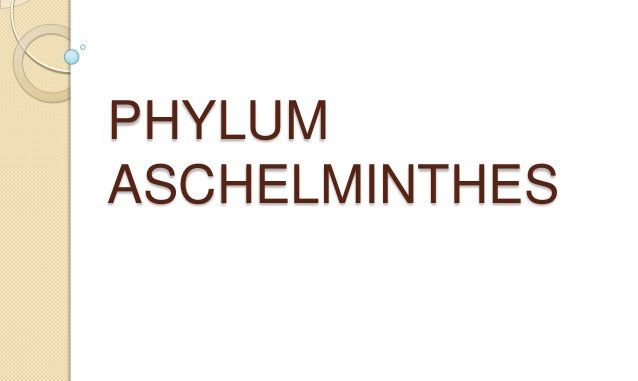
General characteristics of Phylum Aschelminthes
- Gr. Askos: cavity; helmins: worms. Nema: thread, helmins: worms
- Habitat: They are marine or freshwater animal.
- Habit: They are endoparasite.
- Coelom: Pseudocoelomate which means they have a cavity called pseudocoel between the gut and body wall.
- Symmetry: bilateral
- Germ layer; triploblastic
- Grade of organization: Organ system grade
- They are non-segmented round worm.
- Their body is covered with cuticle.
- Digestive system: simple type
- The mouth is provided with hooks and suckers
- Respiratory system: Absent
- Circulatory system: Absent
- Nervous system: poorly developed
- Excretory system: Protonephridia and canals
- They are unisexual or dioecious animals
- Reproduction: sexual by gamatic fusion
- Fertilization: internal
Classification of phylum Aschelminthes/Nemathelminthes
Aschelminthes is classified into five classes
Class 1 Nematoda
(Nema: thread)
- They are endoparasites
- Body is Bilaterally symmetrical and vermiform.
- Body covered in a complex cuticle.
- Sexes are separate
- Examples: Ascaris (round worm), Ancyclostoma (hook worm), Enterobius (pinworm)
Class 2 Rotifera
- They are minute microscopic aquatic
- Sexes are separate
- Excretion: two protonephridia tubes
- Examples: Brachionus, Colotheca, Philodina
Class 3 Gastrotricha
- They are minute aquatic free living
- Sexes are separated or united
- Excretory organ: present or absent
- Examples: Urodasys, macrodasys, Chaetonotus
Class 4 Kinorhyncha
- Minute microscopic marine
- Body is internally segmented
- Sexes are separates
- Development: indirect ( with larval form)
- Examples: Echinoderes, Centroderes
Class 5 Nematomorpha
- They are long slender un-segmented worm
- Known as hair worm
- Sexes are separate
- Examples: Nectonema, Gordius
